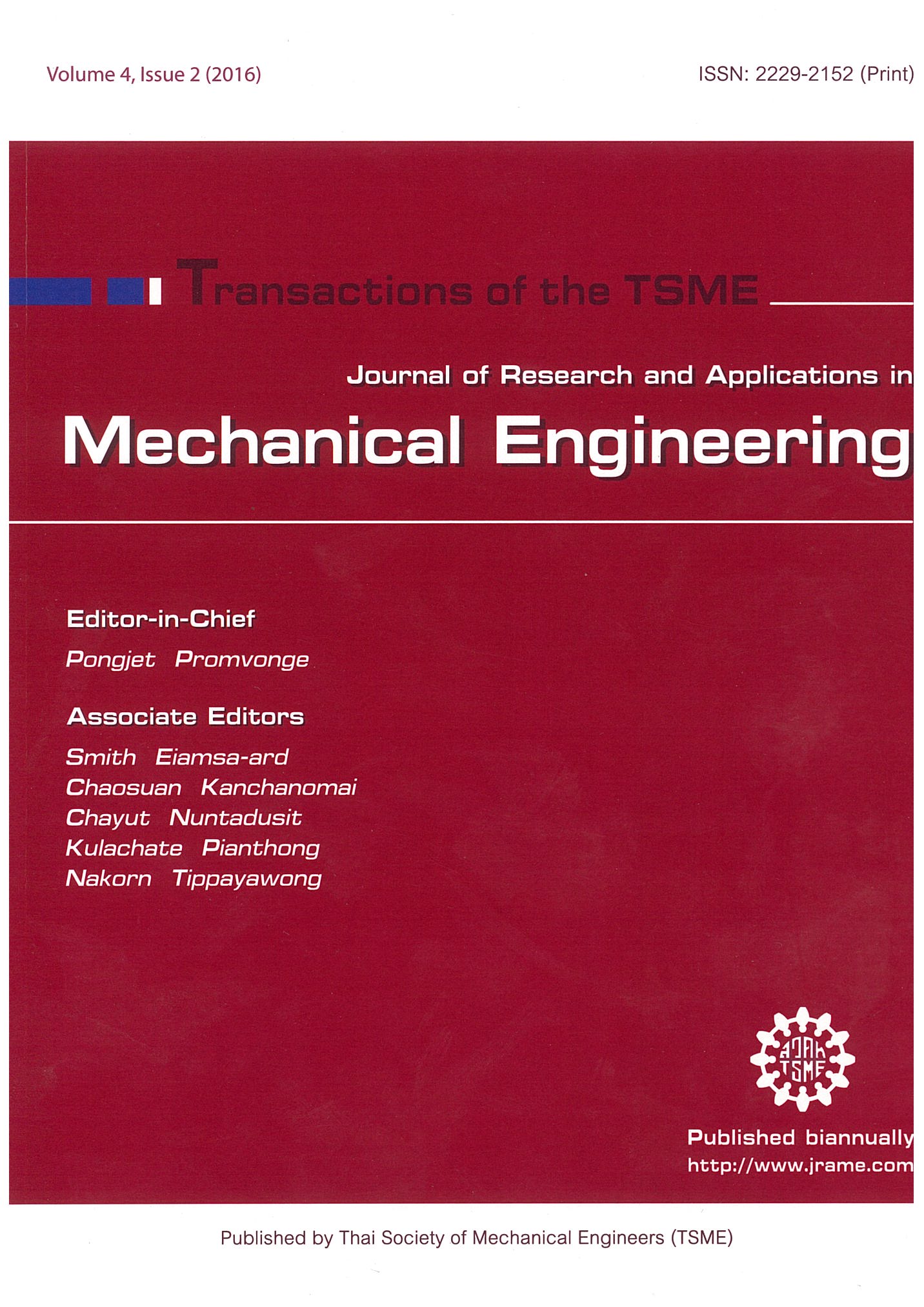Numerical heat transfer study in a round tube with inclined rectangular rings
Main Article Content
Abstract
This paper deals with a numerical study on heat transfer and flow characteristics in a round tube inserted with inclined rectangular rings (IRR). The IRR elements at attack angle of 45 were mounted periodically into the test tube. Air was employed as the test fluid with Reynolds number from 3,000 to 18,000. The study reveals that the insertion of IRR elements can create two counter-rotating vortices along the tube that help increase the turbulence intensity apart from conveying the colder fluid from the core region to the heated-wall region. The IRR insert provides the high heat transfer and pressure drop increase than the smooth tube alone. Also, the tube fitted with IRR has considerably higher thermal performance than the smooth tube. The highest thermal performance for using the 45 IRR is found to be 2.12 at BR=0.2 and PR=0.5.
Article Details
This work is licensed under a Creative Commons Attribution-NonCommercial-ShareAlike 4.0 International License.
References
[2] P. Promvonge, N. Koolnapadol, M. Pimsarn, C. Thianpong, Thermal performance enhancement in a heat exchanger tube fitted with inclined vortex rings, Appl. Therm. Eng., Vol. 62, 2014, pp. 285-292.
[3] P. Promvonge, S. Tamna, M. Pimsarn, C. Thianpong, Thermal characterization in a circular tube fitted with inclined horseshoe baffles, Appl. Therm. Eng., Vol. 75, 2015, pp. 1147–1155.
[4] M. Sheikholeslami, M. Gorji-Bandpy, D.D. Ganji, Experimental study of the influence of perforated circularring on pressure loss and heat transfer enhancement using sensitivity analysis, Appl. Therm. Eng., Vol. 91, 2015, pp. 739–748.
[5] A. Kumar, S. Chamoli, M. Kumar, Experimental investigation on thermal performance and fluid flow characteristics in heat exchanger tube with solid hollow circular disk inserts, Appl. Therm. Eng., Vol. 100, 2016, pp. 227–236.
[6] M. Sheikholeslami, D.D. Ganji, M. Gorji-Bandpy, Experimental and numerical analysis for effects of using conical ring on turbulent flow and heat transfer in a double pipe air to water heat exchanger, Appl. Therm. Eng., Vol. 100, 2016, pp. 805–819.
[7] W. Chingtuaythong, P. Promvong, C. Thianpong, M. Pimsarn, Heat transfer characterization in a tubular heat exchanger with V-shaped rings, Appl. Therm. Eng., Vol. 110, 2017, pp. 1164-1171.
[8] S.O. Akansu, Heat transfers and pressure drops for porous-ring turbulators in a circular pipe, Appl. Energy, Vol. 83, 2006, pp. 280–298.
[9] V. Ozceyhan, S. Gunes, O. Buyukalaca, N. Altuntop, Heat transfer enhancement in a tube using circular cross sectional rings separated from wall, Appl. Energy, Vol. 85, 2008, pp. 988–100.
[10] P. Promvonge, S. Sripattanapipat, W. Jedsadaratanachai, Numerical simulation of Al2O3-water nanofluid flow and heat transfer in a tube with angled rings, Adv. Mater. Res. Vol. 931–932, 2014, pp. 1168–1172.
[11] S. Sripattanapipat, S. Tamna, N. Jayranaiwachira, P. Promvonge, Numerical heat transfer investigation in a heat exchanger tube with hexagonal conical-ring inserts, Energy Procedia , Vol. 100, 2016, pp. 522 – 525.


